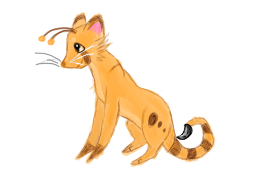(I promise, I never would have come up with this on my own. It’s a specific, special request from one of the players. I’m just adding the crunch and gristle.)
One of the stranger creatures discovered in the New World was dubbed the Sanguisocius, or blood-bird. Sages believe them to be related to stirges, though they are smaller. A fully grown blood-bird is about the size of a overfed pigeon, weighing about a pound with a wingspan of about two feet.
They appear to be sickly crossbreeds of bird and bat, with sparse, bristly feathers and a narrow, pointed beak. Their eyes are over-large and uncomfortably moist, with a cloudy nictitating membrane. In coloration, they resemble the cassowary, with dark feathers and bright blue skin. The females have scarlet wattles, while the males have bright orange crests.
Blood-birds are prone to allergies, rashes, and eye irritations. They are slow-moving and phlegmatic. Their wings cannot support them in true flight, but can be used for climbing and gliding in an ungainly fashion. In the wild, they hunt by climbing into the lower branches of trees to wait for warm-blooded animals to pass beneath. When a target presents itself, they drop and flutter onto it. There, they work their way to the victim’s neck and use their sharp beaks to open one of its veins. While this is initially uncomfortable for the victim, the blood-bird immediately inserts its long, barbed tongue, which exudes a numbing saliva. It then nourishes itself on the creatures’ blood. If left alone, they will stay with one host indefinitely.
The first human explorers in the New World didn’t think much of the wild blood-birds they encountered, initially. They were considered yet another new, hostile inhabitant of the jungles, on par with the reeks and miniature slugbeasts the explorers had already seen. They became considerably more interested when they encountered hostile elves, and noticed that some of the elves were hosts for the birds. In fact, the humans eventually noticed that the elves with blood-birds on their neck tended to be the particularly hostile elves. The berserkers, as a matter of fact.
As it turns out, the blood-bird is somewhat symbiotic. While feeding, it can share its own energy with the host. Effectively, the host gains 2 Fatigue, which can only be used for physical feats — not for spell-casting. On the down side, having an ugly blood-sucking bird hanging from one’s neck is unpleasantly distinctive. The host effectively suffers from Odious Personal Habit 1 and Unnatural Feature 3, and will be marked by polite society as some kind of weirdo, at best.
Some of the peoples from the Old World took up the habit of hosting blood-birds, just as people have inexplicably taken up other bizarre and unhealthy habits. It’s never become particularly popular, but there is a subculture of blood-bird breeders in and around Tembladera. A healthy (for their kind) chick, ready to bond with a sentient host, can be had for $1,000 once a breeder has been located. Finding one, and establishing a relationship, can be tricky. Voluntary blood-bird hosts would do well to make sure to stay on the good side of their breeder contact until they’ve put points into Veterinary and Animal Handling (Blood-Birds), as the creatures are very troublesome pets, in need of constant care (and feeding, of course — constant feeding of warm blood directly from the vein).
A blood-bird can’t be casually removed from a host. Hasty removal can badly injure both the bird and the host. The host rolls HT-2, taking cutting damage to the neck equal to any margin of failure. The bird dies if it can’t make a roll against its own 9 HT. If it survives, it will immediately start seeking a new host. It will feel compelled to flee the area at all costs to do so, as its instincts tell it to fear retribution from its former host.
Having a blood-bird hanging from one’s neck can interfere with many forms of neck armor. They don’t care for being confined too much, so a mail coif, for instance, would be intolerable. One can be coaxed into putting up with a greathelm with an Animal Handling roll. Making the roll exactly gains ten minutes of cooperation, with an additional ten minutes for every point the roll is made by.
A blood-bird on a host can be targeted in combat. It is SM -5, and nearly any damage will force a HT roll for survival. (You could consider them to have 1 HP, or you could just hand-wave it and say that they make HT checks upon encountering anything stronger than harsh language.)
Blood-birds are not silent. They do have their own distinctive caw. They’re placid enough that a host’s Stealth is not penalized, particularly. In the event of a critical failure of Stealth, Camouflage, or other sneakiness, however, the bird might become disturbed and start a ruckus of flapping and crowing, drawing attention.

